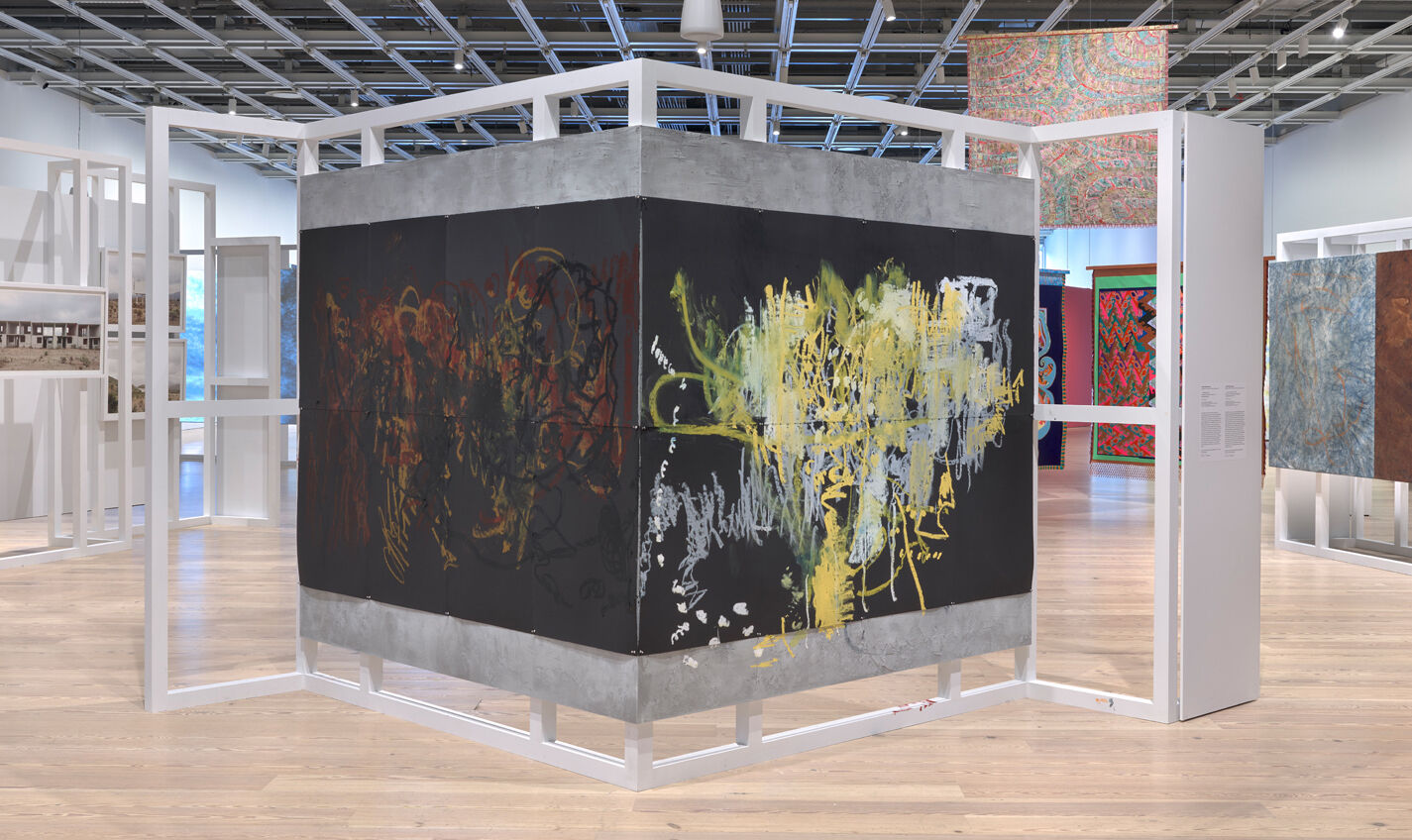Whitney Biennial 2022: Quiet as It’s Kept | Art & Artists
Apr 6–Oct 16, 2022
Whitney Biennial 2022: Quiet as It’s Kept | Art & Artists
Awilda Sterling-Duprey
56
Floor 5
Born 1947 in San Juan, PR
Lives in San Juan, PR
Since 1980, Puerto Rican artist and performer Awilda Sterling-Duprey’s four-decade career has been influenced as much by Afro Cuban religious dance traditions as by the composer John Cage and musician John Coltrane. Her dance-drawings, a series of works begun in 2020, involve her blindfolding herself to make intense jittery, abstract marks on paper and walls in response to jazz improvisation. She has explained: “In the moment, while making those images, I don’t have a sense of what I am doing, but I am enjoying grasping the concept. Abstraction gives me that openness and that freedom; from there, I can go further, be riskier in how I work. I have been forcing my brain to push ideas for so long that I don’t need to see what I am doing. To me, this is what is most abstract. Precisely because this information is encapsulated in my body, I don’t have to see what I am building on. I just have to feel it first.”
Learn more about Sterling-Duprey’s performance of . . . blindfolded.
Drawing #3, 2020
-
0:00
Awilda Sterling-Duprey, …blindfolded
0:00
Narrator: Artist Awilda Sterling-Duprey:
Awilda Sterling-Duprey: I have always been very curious and very into impulsive, something attracts me and I don’t ask for permission or whatever. I just go there to see what is happening or to see is it true what I felt or what I heard.
Narrator: Sterling-Duprey performs her paintings and drawings into being. She blindfolds herself, then allows music to guide her in improvisational movements that lead to mark-making on paper, and the walls.
Awilda Sterling-Duprey: I am using sound, I am following sounds, the energy of improvisation, jazz improvisation to produce those images or those traces on the paper that my body has to follow. I don’t have a sense of what I am doing at the moment, but I do know that I am enjoying what I am doing. Yes. I have to feel that I am enjoying grasping the idea and the concept.
My impression is that I have so much information in my brain, what I have been doing before, always using my body to do things, to create things, usually in large spaces, large format, that I think I don’t have to see what I am doing, because it is already there. It’s just a way of feeling where I am feeling the surfaces, listening to the sound and the noise, and the music.
I think that’s probably also very much connected to jazz. You cannot just memorize the song. You memorize the song, but you have to imbue it with your own feelings. Even when following the rules for jazz interpretation, you have to feel it first and you make it your own. And then you can improvise.

